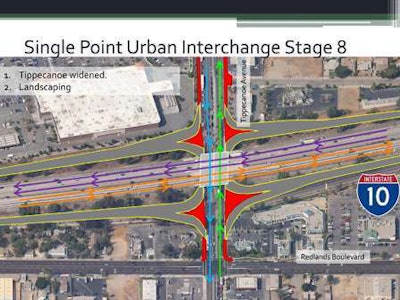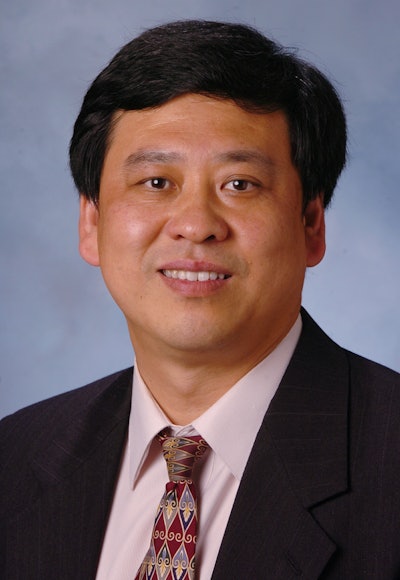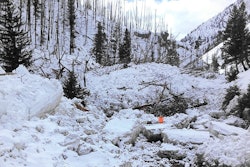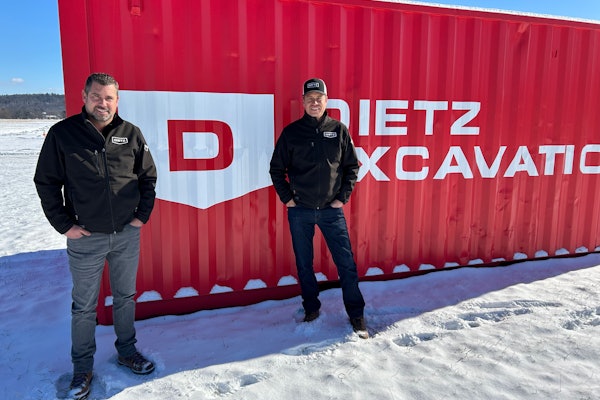 Shutterstock image
Shutterstock imageIf you want to be a transportation engineer in Southern California, your chances improve dramatically when you have Xudong Jia as your professor. At California State Polytechnic University, Pomona (Cal Poly Pomona), Jia teaches in the Civil Engineering department with classes of students who want to build the roadways of the future. Several years ago, Jia formed a partnership with the California Department of Transportation (Caltrans) to give his students real-world experience.
The students in Jia’s CE 222 Highway Engineering class and CE499 Senior Project class use Transoft Solutions’ AutoTURN to check their designs. They create modifications to an existing roadway or intersection and provide alternatives that Caltrans hadn’t considered.
“Once we’ve finished with the intersection design, we use AutoTURN to check the turning movements, to make sure the radius and the lane width are correct. We always make sure we are matching the Caltrans practices, because Caltrans uses AutoTURN as well to perform those checks. We want to teach our students to follow those practices. The students learn all the uses of AutoTURN and they also understand the way that Caltrans does business,” says Jia
 The Civil Engineering students in Professor Jia’s classes use their training and the AutoTURN software to recommend changes or improvements to freeway interchange projects all across Southern California.
The Civil Engineering students in Professor Jia’s classes use their training and the AutoTURN software to recommend changes or improvements to freeway interchange projects all across Southern California.“We started the partnership seven years ago,” Jia continues. “From our early conversations, we realized they couldn’t donate cash towards the program but they said they could donate engineers’ time to come down and give us help. Every year, Caltrans gives us a project that they are working on. They want to get some alternative views, so they get our students to work on it.”
As one of the largest government agencies in the state, Caltrans employs engineers in many disciplines. They also work with consulting companies who provide expertise across the engineering spectrum. In California, where, according to a U.S. Department of Transportation report, motorists travelled 85 billion miles in 2011, making improvements to freeways and interchanges is vitally important work.
Jia’s students have the opportunity to learn from the people they might work with in their careers and contribute ideas that add engineering knowledge to their more-experienced colleagues.
“They can easily get a job in their field,” says Jia. “Even though we are still in a recession and the job market isn’t great, the majority of students who finish the senior project have a job. A big part of it is that they see how Caltrans works. I open the door for them, but the students have to do the work to prepare for a future job.”
With rigorous course work and hundreds of real-world freeway projects to work on, Jia has the students on a good track.
Jia appreciates the relationship with Caltrans, as one of the leaders in engineering in California. As part of the course curriculum, he tries to bring industry experts in to talk to his students.
 Professor Xudong Jia
Professor Xudong Jia“Sometimes we invite consulting firms to come and talk to the students. Caltrans has a lot of consulting firms working for them, so it’s easier for the consultants to come down to us. When Caltrans asks them to come and help us, they can’t really say no!” laughs Jia.
AutoTURN is the world’s leading software for vehicle swept path analysis. Transportation engineers have relied on it for decades to accurately visualize turning radii, transition curves, super elevation and lateral friction in all types of roadway, highway and site design projects.
Because AutoTURN is based on the AASHTO standards, there is virtually no guesswork when it comes to final designs. AutoTURN ensures the standard for safety and reliability Caltrans requires is met. Jia and his students also use AutoTURN closer to home.
“We have also used AutoTURN to check the geometric layout design of a roundabout at Cal Poly Pomona Campus,” says Jia. “Through the use of AutoTURN, we found that the existing roundabout layout design is not sufficient to make school buses to traverse the roundabout. Several solutions to correct the problem have been developed and presented to the Parking and Transportation Services (PTS), Cal Poly Pomona for consideration.”
The relationship between Cal Poly Pomona and Transoft Solutions goes back close to ten years, when Xudong Jia started his teaching career. With AutoTURN’s 20-year history, industry professionals who used the software in its early days are now teaching the next generation of engineers with a much more robust version of the product.
As Margaret Gochngbok, regional account manager for Transoft, says there is a shared desire to see the students succeed.
“The educational mandate comes from our president and co-founder Milton Carrasco. We’re empowered to offer licenses for AutoTURN for educational purposes as a way of ‘paying it forward’. We want to see students with the tools to succeed in their chosen field and prepare the best way possible for the workplace,” Gochngbok continues.
The SmartPath tools within AutoTURN help the Cal Poly Pomona students and Caltrans engineers alike visualize how vehicles move within their design drawings. From arc and corner path simulations to over-steering visualizations, AutoTURN is an indispensable tool for highway design. With an established interstate highway system in place, Caltrans is always looking to make freeways more efficient.
“This quarter, I have ten students working on a project on I-15 at Cajalco Road (in Southern California) and we are working on the design of one of the interchanges. We are involved in modifying the interchanges and we do this to increase the capacity. Or we do it to reduce the congestion of traffic. This usually involves re-aligning the existing interchange,” Jia explains.
It’s actually a common practice for one of Jia’s classes to influence or change one of Caltrans’ big freeway interchange projects.
“It happens all the time,” says Jia. “In fact, it’s happened the last seven years in a row. Sometimes they look at our alternative design a little too late and the project is already under construction. Here’s a common scenario: the consultant has provided three alternatives to improve a highway. My class also provides three alternatives. Sometimes our alternative is better than theirs. Because of the excellent work done by the students, Caltrans District 8 has invited the project team to give a presentation to more than 100 Caltrans engineers.”
Future freeways, off-ramps and intersections throughout the state of California are in good hands with Xudong Jia’s classes at Cal Poly Pomona turning out successful graduates.
As Jia says, “The relationship wouldn’t work if it was only them donating their time to us. We give them some insightful ideas. We learn from Caltrans but Caltrans learns from us too.”
About the author: Chris Johns has been a writer and editor for more than 20 years. Beginning as Sports Editor for the Manitoban at the University of Manitoba in 1991, he has written more than 500 articles covering topics from World Cup Volleyball to the oil sands of Northern Canada. In 2012, he joined Transoft Solutions, where he has written about the transportation engineering industry for a variety of publications. He holds a Master’s degree in Applied Communications from Royal Roads University.












